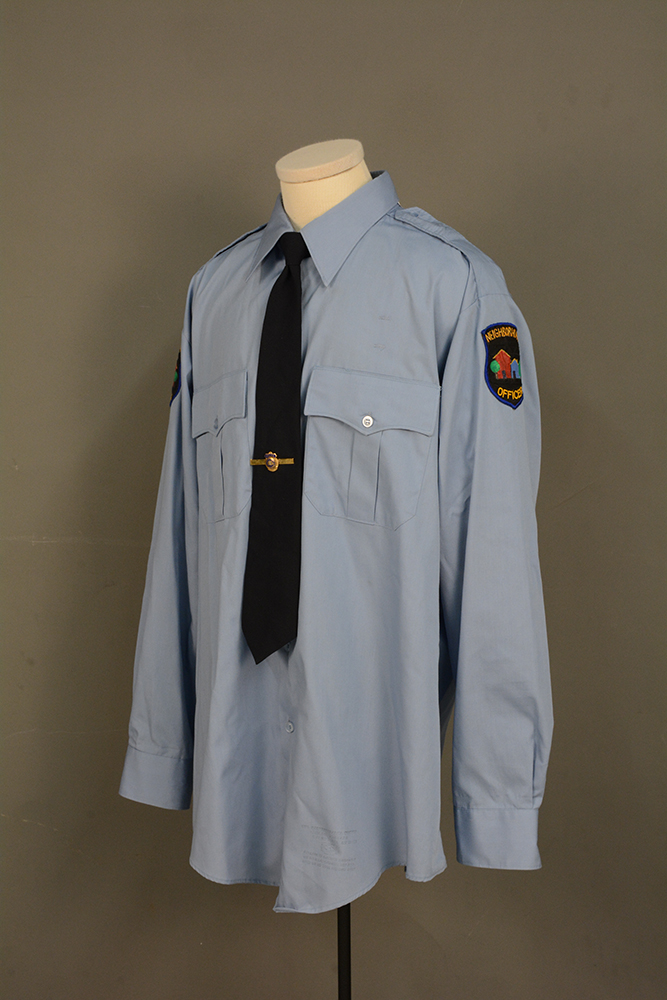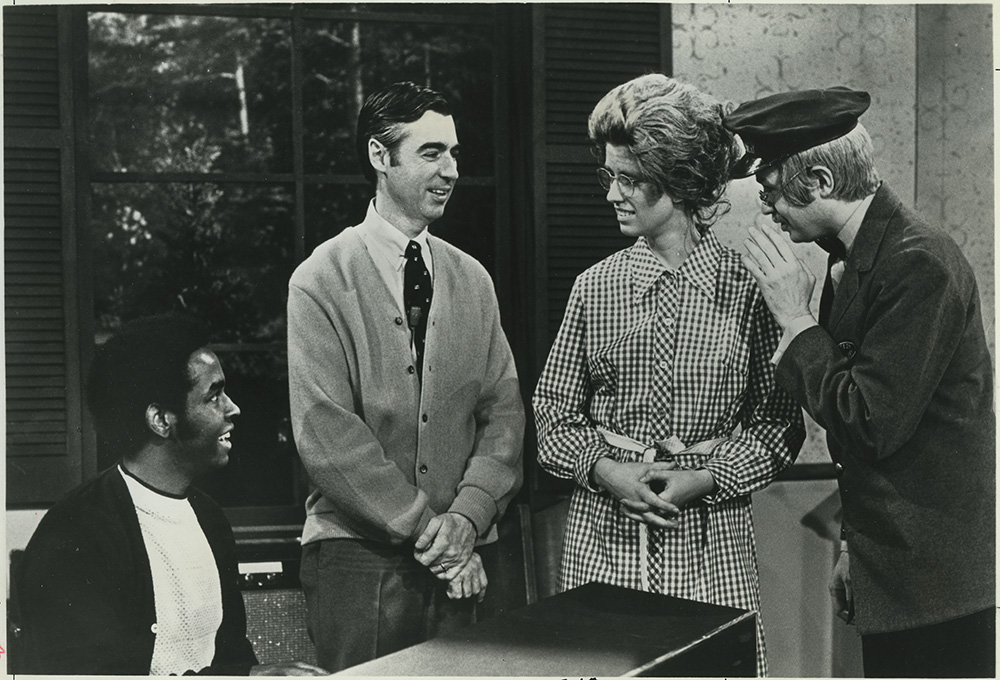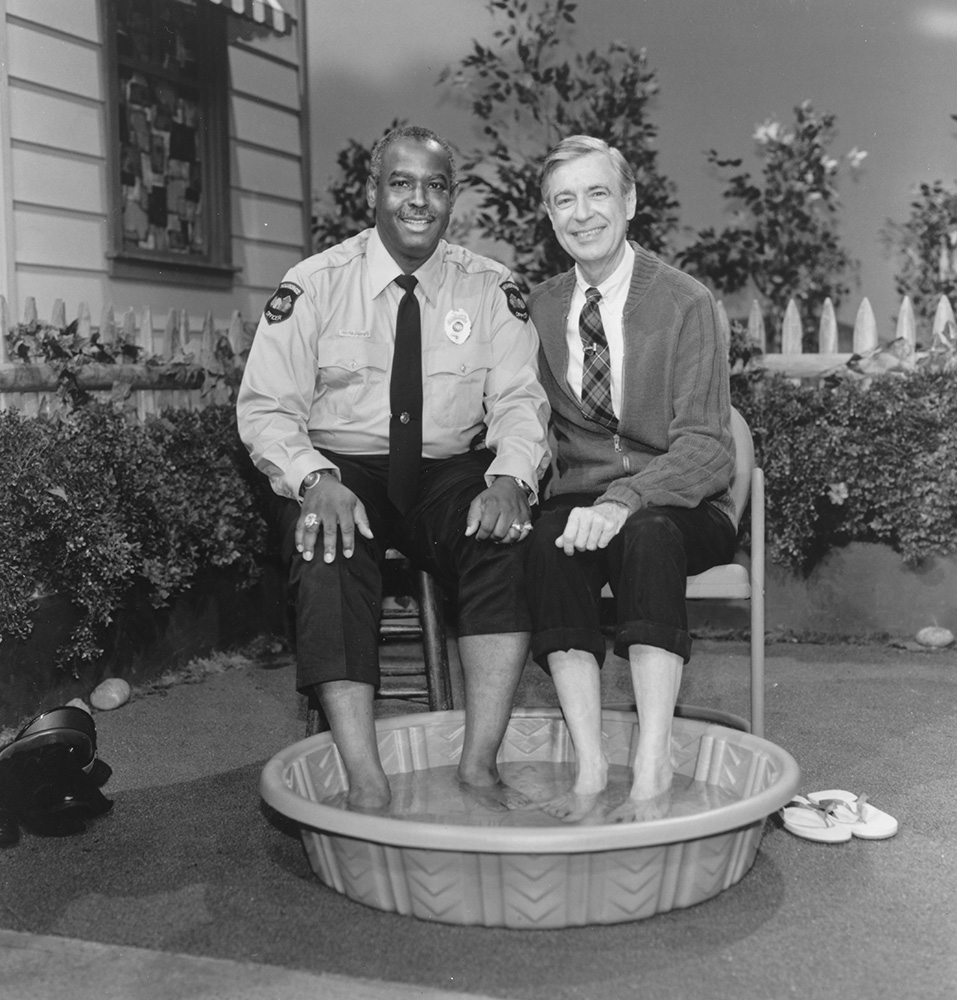This story will appear in the Summer 2018 issue of Western Pennsylvania History magazine, out soon.

The History Center is proud to be the home of the “Mister Rogers’ Neighborhood” set in addition to other artifacts related to the television show, including one of his sweaters and a pair of sneakers, which have all become pop culture icons. In celebrating the 50th anniversary of the show’s debut and its enduring impact, we have a unique opportunity here in Pittsburgh — because of our access to the regional institutions and people who contributed to the show — to document and share all that went into making this local show a national success.
Fred Rogers thoughtfully crafted every episode’s themes, songs, and dialogue and consulted with local child development experts, especially his mentor Margaret B. McFarland of the University of Pittsburgh. The use of a diverse cast, puppet friends, and special guests helped children explore different (and perhaps new) personalities, conflicts, and experiences.

François Clemmons knows better than most how Fred strategically chose his cast and the role they played in the neighborhood. François met Fred while living in Pittsburgh and pursing a Master’s degree at Carnegie Mellon University. They attended the same church and Fred invited François to be on the show periodically after hearing him sing in the choir. When Fred approached him about portraying Officer Clemmons, a more permanent role on the show, he was not only reluctant, Clemmons was stunned. [1] As an African American man who grew up in a poor neighborhood in the 1960s, he let Fred know that he did not have a positive view of police officers. Eventually he relented and agreed to the role because Fred expressed his hope that Clemmons could embody the “helper” aspect of police work and give children that grew up in a similar manner to Clemmons a different view of the public service provided by police. The character of Officer Clemmons appeared during the first year of the show in 1968, and Clemmons became the first black man in a recurring role on a children’s television program.

The most memorable episode his character appeared in aired in May 1969, when tension between police forces and minority residents was at its height and civil rights riots were taking place in cities across the country. Among the hot-button issues at the time were the ongoing resistance to swimming pool integration in the South and fierce debates over integration of schools in Pittsburgh. In this atmosphere of fear and distrust, Mister Rogers incorporated a scene into the episode where he invited Officer Clemmons to cool his feet with him in a children’s wading pool on a hot day. François recollects that he and Fred had many private conversations regarding continued racism in America, and Fred, who loved to swim, particularly disagreed with the resistance to swimming pool integration. Pittsburgh’s own Highland Park Pool received national coverage in the late 1940s over white swimmers’ refusals to allow blacks to use the public pool and the violence that ensued. Although the law technically stated that pools were integrated, there was still much de facto segregation at pools throughout the country. [2] This simple scene of a black man and white man soaking their feet together on a children’s television show sent a powerful message to the nation about our common humanity.
In 1993, after a 10-year absence from the show, Officer Clemmons appeared again in an episode where he and Fred reenacted their famous scene. Continued racial strife in the United States convinced Fred that the message he and Clemmons shared in that 1969 episode desperately needed to be shared again. In the second pool-soaking episode, Fred subtly took it a step further, by helping Officer Clemmons dry his feet as he exited the pool. François claimed that this act was pointed, because of their shared Christian faith: they both appreciated the reference to Christ washing the disciple’s feet at the Last Supper and the humbling bond that it created between two people. This act of sacrificial love stuck with Clemmons who stated, “I am a black gay man and Fred washed my feet.” [3]
In 2016 François donated his Officer Clemmons jacket, shirt, and tie to the History Center collection. We hope more former cast and crew members will share with us their stories and artifacts related to their time on the show. Donations such as this add to the impact that “Mister Rogers’ Neighborhood” had on the lives of generations of children — and their parents too.
[1] StoryCorp interview and author interview with François Clemmons, Feb. 9, 2018.
[2] Norman, Tony, “Another lap in the pool with integration”, Pittsburgh Post-Gazette, July 9, 2009; “Wider Use of County Pools Urged” Pittsburgh Post-Gazette, May 15, 1954; NPR staff, “Remembering A Civil Rights Swim-In: ‘It Was a Milestone.’”
[3] Author interview with François Clemmons, Feb. 9, 2018.
Emily Ruby is a curator at the Heinz History Center.